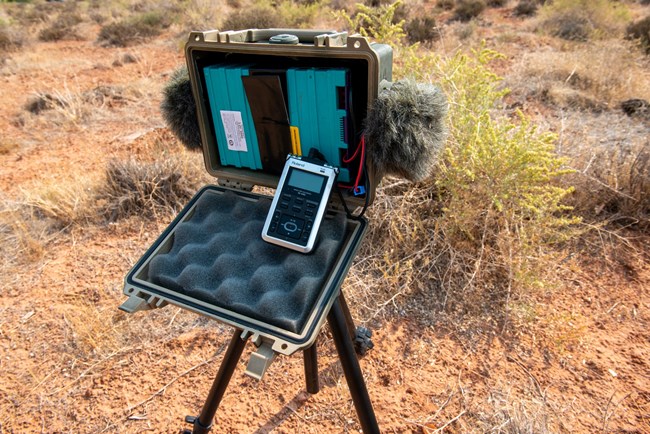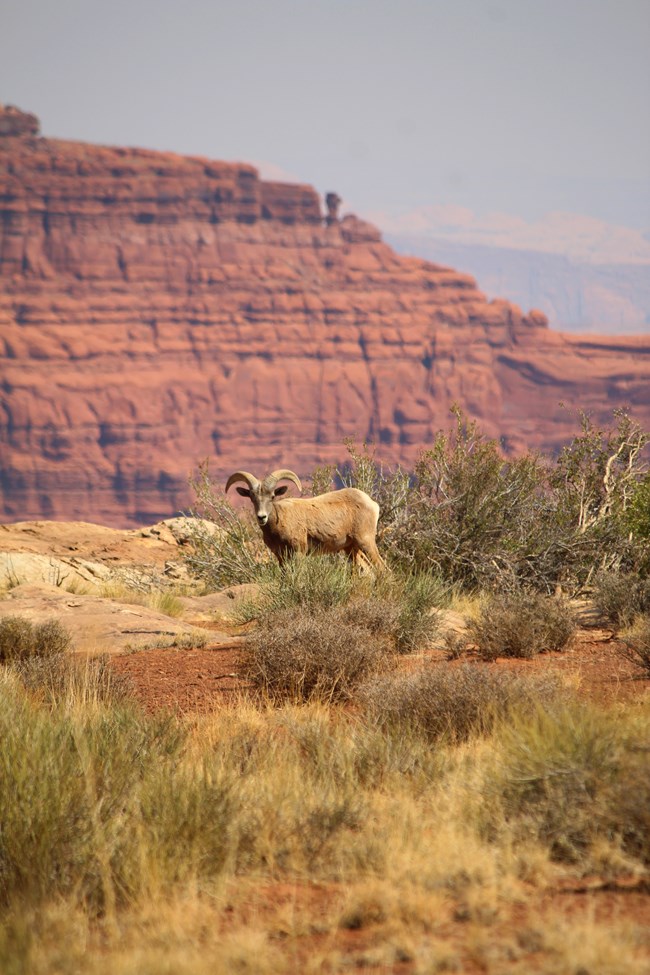
NPS/Rhodes Smartt The Soundscape of CanyonlandsThe whistle of wind through the canyons, the throaty caw of a raven, the roll of thunder as a monsoon sweeps across the land, the soft click of a camera shutter at a view point – are all sounds you might hear during a visit to Canyonlands National Park. Just as each park has a distinct landscape, each park also has their own soundscape: the unique combination of natural, cultural, and historic sounds that make up the total acoustic environment of an area. As our modern world becomes louder, these natural soundscapes are more important than ever to protect. Sound vs. NoiseWhile noise is often used as a synonym for sound, there is a difference. Noise is considered any sound that is unwanted or inappropriate in an environment, usually in the form of human-caused sound, and can even be a type of pollutant. Natural soundscapes are affected by this noise pollution in the form of traffic, horns, sirens, dogs barks, jackhammers or overhead jets, when noise levels grow to disrupt the activities and balance of human or animal life. While noise pollution can come from inside the park, noise knows no boundaries. Just as light pollution from a city can affect the night sky, noise from potentially miles outside the park can drastically change the soundscape. A near-constant source of noise pollution in the backcountry of Canyonlands and many other areas is aircraft noise, primarily high commercial jets, with some scenic flights as well. 
NPS/Veronica Verdin By law (Section 4.9, Soundscape Management, NPS Management Policies), national parks are required to restore and manage park acoustical environments and soundscapes. Researchers at Canyonlands monitor sound levels and intruding noise to establish baseline data on sound levels in the park. This information enables the National Park Service to work more effectively in partnership with tourism and aviation industries toward preserving or restoring natural quiet in national parks nationwide. But besides the law, why is it important to preserve soundscapes? 
NPS/Sierra Goodwin The Importance of Natural QuietAnimals use sound and hearing for a range of activities: communication, courtship and mating, to avoid predators, and raise young. The yips and howls of coyotes, the high-pitched echolocations of bats, the dawn chorus of bird songs; all sounds that complete the natural soundscape of a thriving ecosystem. Growing research shows that human-caused noise can interfere with natural behavior and communication in wildlife. Within Canyonlands, bighorn sheep, mule deer, and mountain lions are among the species most affected by noise pollution. Studies reveal that animals experience physiological effects in the presence of long-term and acute noise, including increased heart rate and elevated blood pressure. Protecting the QuietIt is the duty and responsibility of the National Park Service to preserve quiet places for visitors to enjoy, and to help protect natural resources. The National Park Service actively protects quiet by regulating activities that produce the most noise pollution. For example, OHVs, ATVs, and UTVs are never allowed in the park. At Canyonlands, staff work to reduce the amount of noise produced by our daily operations. In the dusty desert, sand that builds up in front of the Visitor Center porch is no longer removed by leaf-blower, but by traditional (and quiet!) straw broom instead. On the Colorado and Green Rivers, river rangers often elect to use quieter four-stroke outboard engines and jet drives while on patrol to minimize their impact on the soundscape. What can you do to Help?Visitors can have tremendous impact on preserving natural soundscapes. By actively seeking silence in tangible ways (e.g. silencing cell phones, whispering at overlooks, not shouting into canyons, etc.), visitors not only enhance their own experience, but that of others as well. Look for opportunities to practice silence throughout the park with the help of rangers on ranger-led programs, or in our park publications. The Canyonlands Junior Ranger booklet encourages Junior Rangers to seek and experience 10 minutes of quiet-- a great activity for visitors of any age! Explore a Symphony of SoundsNatural Sounds from Across the NPS |
Last updated: April 18, 2025
